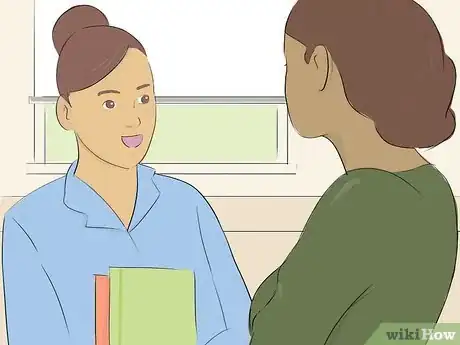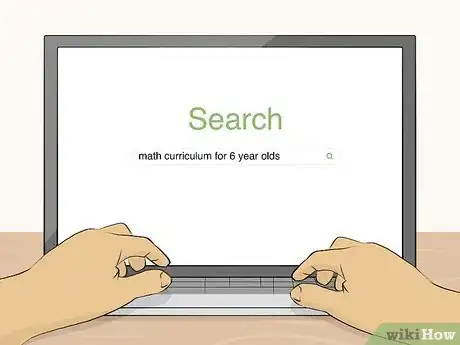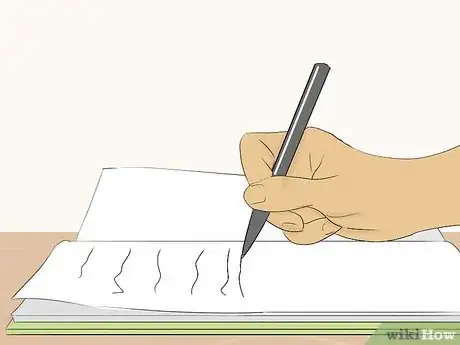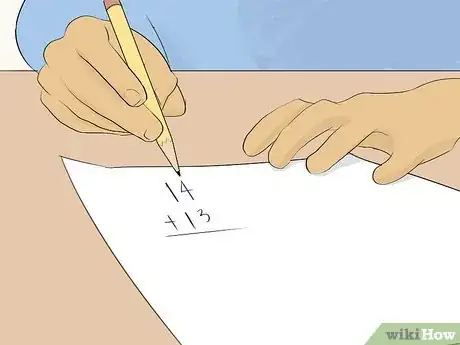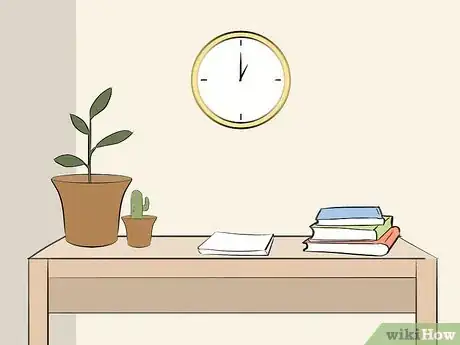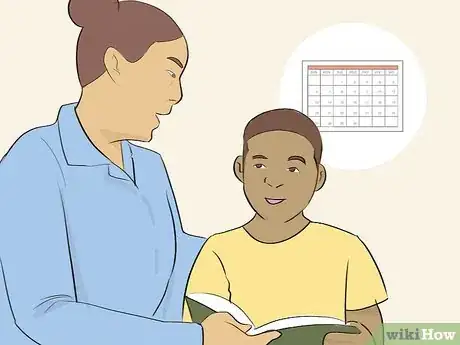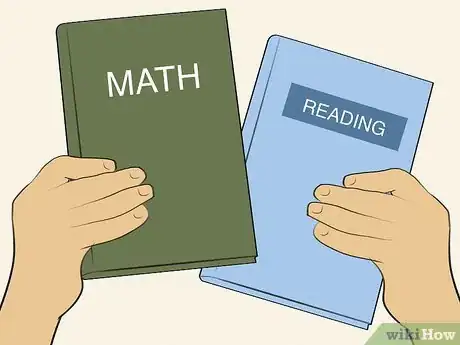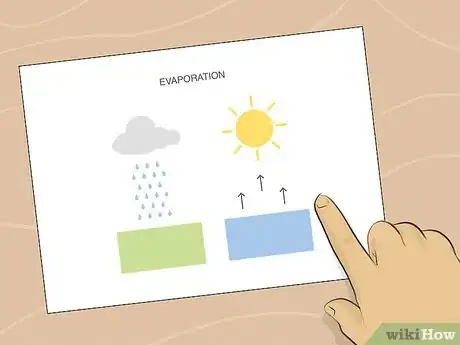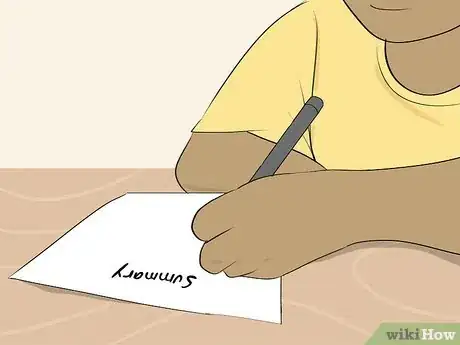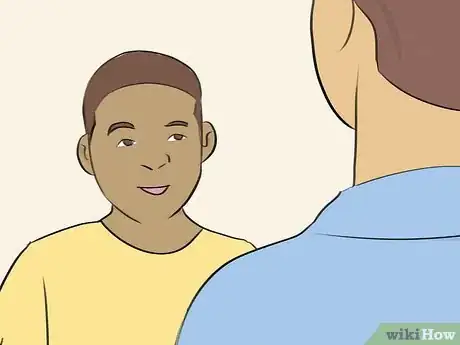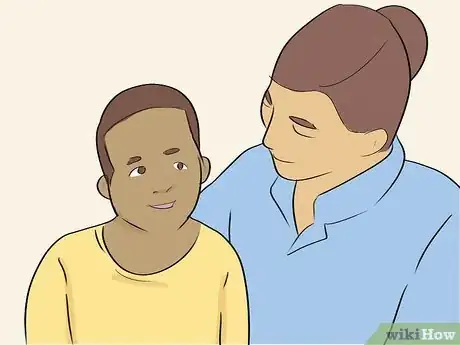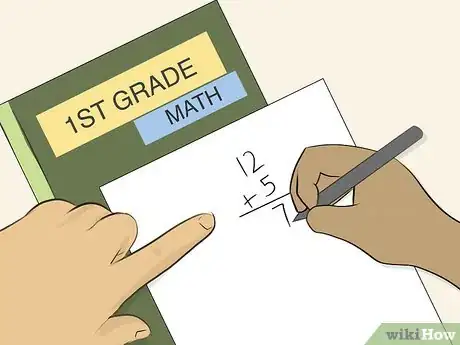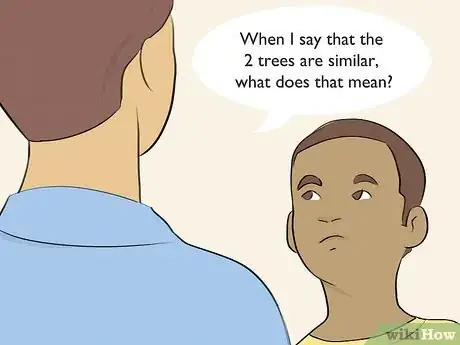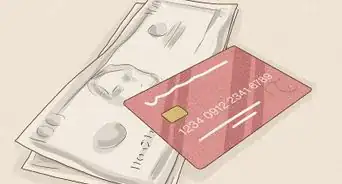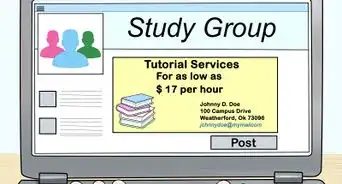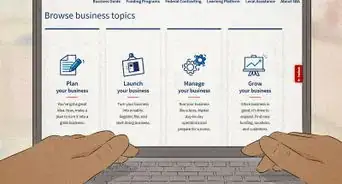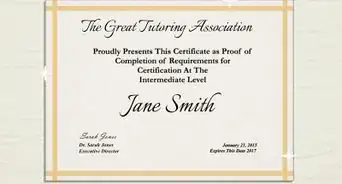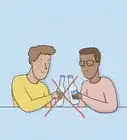This article was co-authored by Ronitte Libedinsky, MS and by wikiHow staff writer, Hannah Madden. Ronitte Libedinsky is an Academic Tutor and the Founder of Brighter Minds SF, a San Francisco, California based company that provides one-on-one and small group tutoring. Specializing in tutoring mathematics (pre-algebra, algebra I/II, geometry, pre-calculus, calculus) and science (chemistry, biology), Ronitte has over 10 years of experience tutoring to middle school, high school, and college students. She also tutors in SSAT, Terra Nova, HSPT, SAT, and ACT test prep. Ronitte holds a BS in Chemistry from the University of California, Berkeley, and an MS in Chemistry from Tel Aviv University.
There are 7 references cited in this article, which can be found at the bottom of the page.
This article has been viewed 114,992 times.
When kids struggle with a certain topic or subject in school, they’ll often need a tutor, or an extra teacher, to help them out. Tutoring kids is very rewarding, but it can be a little tough if you’re just starting out. By talking to your student and keeping their goals in mind, you can be a great tutor and give your student the study skills that they need to succeed.
Steps
Getting to Know Your Student
-
1Check in with your student’s parents or guardian. If your student is in elementary school, their parents or guardians may be able to tell you what they need. Ask about how your student is doing in school and what they’ve noticed their child struggling with.
- Your student’s parents or guardian are probably the ones who contacted you, so it shouldn’t be a problem for them to articulate what their child needs help with.
Tip: While you can check in with your student’s parents or guardian often, try to keep most of the tutoring session confidential. Your student’s grades, if they share them with you, should be kept between you and your student.
-
2Talk to your student to find out what they need help with. Sit down with your student and ask them why they need a tutor and how you can help them. Even if their parents or guardian already told you, it’s nice to hear it in your student’s own words. Get to know them a little bit by finding out what their favorite subject in school is and what they like to do for fun.[1]
- If your student is super young, they might not be able to express what they need help with. In that case, just focus on getting to know them.
- When you find out what your student likes to do, it can help you plan games and activities for future lessons.
Advertisement -
3Have a conversation with your student’s teacher, if you can. If you feel comfortable doing so, reach out to your student’s school teacher to talk about how they’re doing. While they won’t be able to tell you your student’s grades, you can ask about what your student needs help with the most and what level the class is at.
- If you don’t feel comfortable reaching out to a teacher, you don’t have to.
-
4Look up the curriculum for your student’s age range. Search the internet for the age of your student and the subject matter that they need help with. Spend a few hours looking up the common curriculum and lessons to get a better idea of what you’ll need to teach your student.
- For example, your student might be 6 years old and need help with math. Try searching “math curriculum for 6 year olds.”
- Khan Academy and Scholastic are websites that provide free lesson plans and educational materials.
- If the subject matter is too hard or you don’t feel like you could teach it well, don’t hesitate to tell your student that you’re not the tutor for them.
Teaching Effectively
-
1Prepare your lesson ahead of time. Once you know what your student needs to work on, start thinking about how you can help them learn. You can prepare a game, set a time frame for each subject, or go over your student’s homework to get prepared.
- For example, if your student needs help with vocabulary, write out some words on flash cards and have your student try to memorize the definitions.
- Or, if your student needs help with math homework, brush up on your multiplication and addition skills before you meet up.
-
2Break down the subject your student is struggling with. As you prepare your lesson, really focus on breaking up the subject into smaller steps. Since your student is already struggling, making the subject easier to absorb will probably help them learn.
- For example, if you are teaching your student addition, break it down into the place values of each number. Then, show them the process on how they can add each number individually.
- Or, if you’re working on reading skills, start with basic word pronunciation. If your student is still struggling here, try going back to the letters of the alphabet.
-
3Find a quiet location where your student can focus. This might be in a quiet study room in the library, in a classroom, or at the student's home. Wherever it is, choose a place that is free of distractions so that you and your student can concentrate.[2]
Tip: If you’re working in the student’s home, try to pick a room that doesn’t have toys or games in it that could distract your student.
-
4Set a timeline to track your student’s progress. Once you’ve met your student, you may be able to gauge how long you think they’ll need your services. Depending on how often you meet, you could be tutoring them for a few months to a full year. Check in with your student, their parents or guardian, and their teacher to track their progress.
- If your student isn’t progressing after 1 month, they may need to find a new tutor.
-
5Ask your student what they’d like to work on first. It’s always nice to feel like you have a choice in what you’ll be learning. Try asking your student at the beginning what they’d like to start with. You can give them options or let them pick on their own.[3]
- For example, you could say, “Do you want to start with your math homework or your reading homework?”
- Some students might not want to pick at all, in which case you can start in on whatever subject you’d like to.
-
6Use simple language to explain tough concepts. You might know something by heart, but it can still be tough to explain it. If your student is having trouble with a concept, try to break it down into easily understandable terms to help them learn.
- For example, if you are teaching a student about the water cycle, talk about rain, snowfall, and bodies of water. Then, you can explain terms like “evaporation” by talking about the heat from the sun and the clouds.
-
7Ask your student to summarize what they’ve learned. A great way to tell if your teaching method has been effective is to ask your student what they’ve learned today and if they understand it. From their summary, you can tell if you need to go over some concepts again or if they’re ready to move on.[4]
- If your student can’t summarize what they’ve learned, you probably need to go over the concepts again.
- You can ask them to summarize at the end of each lesson or after each concept you introduce.
-
8Take a break every 20 to 30 minutes. It’s hard to learn a bunch of new information all at once, especially for kids. Try to give your student a break about every 30 minutes, or more often if they need it.[5]
- You can stand up and stretch, walk around the block, or just grab a snack and some water.
Tackling Tough Situations
-
1Listen to your student and be flexible about your lesson plan. Sometimes, the activities or ideas you have planned out won’t work for your student, and that’s okay. Take feedback from your student on how well they’re understanding something and be willing to change up your plans for the day.
- For example, your student may have forgotten a concept that you talked about last week, like long division. Before moving on to the next subject, you can quickly go over last week’s lesson so your student feels more prepared.
- Some students have learning disabilities that makes it hard for them to retain information. Try not to get frustrated if you have to review concepts with them more than once.
Tip: Try to always be patient, and avoid yelling at or scolding your student at all costs.
-
2Take the pressure off your student so they feel relaxed. School can be really stressful for kids, especially if they’re falling behind. Try to let your student know that when they’re getting lessons from you, they don’t need to be the smartest or the fastest. Foster an environment that your student can feel calm and collected in.[6]
- You should feel almost like a friend to your student instead of a teacher. That way, they’ll be more receptive to learning from you.
-
3Focus on subjects in your student’s grade level. Try to hold off on introducing new, hard topics until your student has mastered the ones they’re supposed to know. This will give your student a solid foundation and make you both less frustrated in the long run.[7]
- For example, if your student is in first grade, make sure they know the basics of addition and subtraction before moving on to multiplication and division.
-
4Reward your student for good behavior.[8] Some kids might not like learning, and some might not want to participate in your lesson plan at all. Consider preparing a fun game for the two of you to play, and then using it as an incentive to do 20 minutes of work.[9]
- For example, you could say, “Let’s do your reading homework for 20 minutes, and then we can play the matching game that you like.”
-
5Ask your student questions to point them in the right direction. If your student is struggling, it can feel like you need to give them the answers right away. Instead, try to ask questions that make your student think about the concept so they can come up with an answer on their own.
- For example, if your student can’t remember the definition of the word “similar,” try asking, “When I say that the 2 trees are similar, what does that mean?”
-
6Admit when you don’t know something. If your student asks you a question that you aren’t sure about, use it as an opportunity to research together. Tell your student that you aren’t sure, and then use a computer or phone near you to look up the answer together.
- This will show your student that it’s okay to not know something, and it can show them how to look up an answer or a concept on their own if they need to.
Expert Q&A
Did you know you can get premium answers for this article?
Unlock premium answers by supporting wikiHow
-
QuestionHow can I be a good tutor?
 Ronitte Libedinsky, MSRonitte Libedinsky is an Academic Tutor and the Founder of Brighter Minds SF, a San Francisco, California based company that provides one-on-one and small group tutoring. Specializing in tutoring mathematics (pre-algebra, algebra I/II, geometry, pre-calculus, calculus) and science (chemistry, biology), Ronitte has over 10 years of experience tutoring to middle school, high school, and college students. She also tutors in SSAT, Terra Nova, HSPT, SAT, and ACT test prep. Ronitte holds a BS in Chemistry from the University of California, Berkeley, and an MS in Chemistry from Tel Aviv University.
Ronitte Libedinsky, MSRonitte Libedinsky is an Academic Tutor and the Founder of Brighter Minds SF, a San Francisco, California based company that provides one-on-one and small group tutoring. Specializing in tutoring mathematics (pre-algebra, algebra I/II, geometry, pre-calculus, calculus) and science (chemistry, biology), Ronitte has over 10 years of experience tutoring to middle school, high school, and college students. She also tutors in SSAT, Terra Nova, HSPT, SAT, and ACT test prep. Ronitte holds a BS in Chemistry from the University of California, Berkeley, and an MS in Chemistry from Tel Aviv University.
Academic Tutor
-
QuestionIf I am 13, am I old enough to tutor? Should I restrict who I tutor to people I know for safety reasons?
 wikiHow Staff EditorThis answer was written by one of our trained team of researchers who validated it for accuracy and comprehensiveness.
wikiHow Staff EditorThis answer was written by one of our trained team of researchers who validated it for accuracy and comprehensiveness.
Staff Answer wikiHow Staff EditorStaff Answer
wikiHow Staff EditorStaff Answer -
QuestionWould it be good to advertise at a local library, or be able to go to the student's home?
 Community AnswerYou could do either, depending on which the student is more comfortable with.
Community AnswerYou could do either, depending on which the student is more comfortable with.
References
- ↑ Ronitte Libedinsky, MS. Academic Tutor. Expert Interview. 26 May 2020.
- ↑ Ronitte Libedinsky, MS. Academic Tutor. Expert Interview. 26 May 2020.
- ↑ https://www.edutopia.org/blog/just-ask-power-student-curiosity-nicholas-provenzano
- ↑ https://www.edutopia.org/blog/22-powerful-closure-activities-todd-finley
- ↑ https://apps.carleton.edu/ccce/assets/Advice_for_Tutoring_Young_Children.pdf
- ↑ https://schools.au.reachout.com/articles/pressure-to-do-well
- ↑ https://www.youtube.com/watch?v=z3XJ342Rz-8&feature=youtu.be&t=166
- ↑ Ronitte Libedinsky, MS. Academic Tutor. Expert Interview. 26 May 2020.
- ↑ https://positivepsychology.com/leadership-activities/
